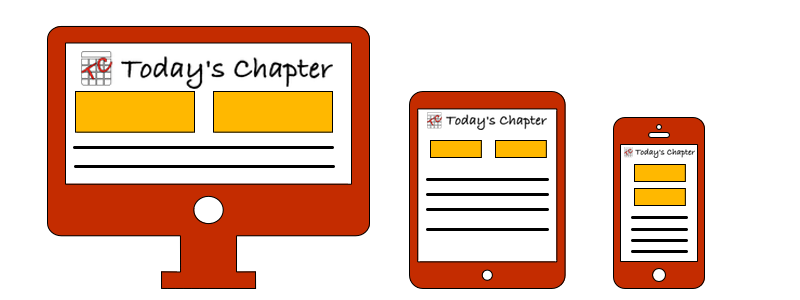Deprecated: Array and string offset access syntax with curly braces is deprecated in /hermes/bosnacweb08/bosnacweb08ag/b1302/nf.pillowponcho/public_html/todayschaptercomnew/wp-content/plugins/monarch/includes/oauth.php on line 102
Deprecated: Array and string offset access syntax with curly braces is deprecated in /hermes/bosnacweb08/bosnacweb08ag/b1302/nf.pillowponcho/public_html/todayschaptercomnew/wp-content/plugins/monarch/includes/oauth.php on line 102

A recurring theme you will hear from authors is that they are often tasked with growing their own audience. If you’re self published this won’t come as a surprise, but even if you’re following a more traditional publishing route it is increasingly rare for publishers to perform the marketing function for you.
Balancing your time between writing and promotion is a topic for a different blog post, but if you’re going to build up an audience of fans itching to buy your next masterpiece then you’ll to need a place to capture them. Social media sites are a good place to start, you can setup an authors page on Facebook or Twitter fairly quickly, but these sites tend to come with restrictions around what you can share and how. Having your own dedicated author website is a great way to keep control of what your fans are seeing and how you interact with them.
I’m not going to go into the specifics of how to build your own website in this post, but I do want to list out some of the things you’ll need to think about, regardless of whether you are buying or building your author website:
Content
As the old saying goes “Content is king”. The fastest way to get people to your website and get them coming back is to create interesting content.
The first thing you’ll want to do is create some ‘static’ content. This essentially means pages that don’t change very often. These are fairly standard, you’ll find them on most websites you visit. You should be aiming for at least the following pages:
- Homepage – the first thing your visitors will see
- About – a page about you as an author. This can have as much or as little detail as you feel appropriate
- Books – a place to immediately see the books you’ve written. Don’t forget to include links to where you can buy them!
- Blog – if you’re going to be posting regular content, this is a good place to collect it
On the topic of a blog, to really engage your readers and create new ones you’ll need to think about providing regular content, to make sure you stay top of mind. This is different from the static pages as your goal is to add new content regularly.
This content can be about absolutely anything and as an author you have more to talk about than you might realize. How and when do you write? What’s your favourite genre? Who are writers you admire? Do you have other writer friends who can do guest posts? Tell us more about your characters, or provide insights into your books universe.
One great way to engage your fans is to give away free samples of your work. These can be excerpts of longer work, standalone short stories or flash fiction. These help potential readers learn more about your writing style, if they like your short stories they will be more likely to take a chance on paying for your longer stories.
It’s worth noting that creating this content is time consuming and I have often been asked how to balance this with writing time. My advice is start off small. Aim to post on a regular schedule and commit to it. I personally wouldn’t wait longer than a month between posts, and daily would be a major commitment. Bi-weekly or weekly are typical when you’re first starting out. You can write these posts ahead of time or in batches if that’s easier, I typically try to have three or four blog posts in draft at any point in time.
Just because you’re a great writer, doesn’t mean you have to stick exclusively to written content. On most platforms you can add in images, audio and even video to spice up your content. Different content types will attract different audiences and can help to provide more insight into your process as a writer. For example, here’s a video I recently posted that shows me writing a piece of flash fiction from start to finish:
Social media buttons
Having compelling content is a great start, but you want to make it as easy as possible for people to share that content. Having a single button a person can push to share your story with their friends is a great way to generate word of mouth and get more potential readers to your site. It’s free advertising!
There are a wide variety of options available to save you having to create these share buttons yourself. Many website platforms will come with built in options, although their functionality may be limited. I personally use the Monarch Social Sharing Plugin for WordPress (you can see it in action on this page, it’s that floating bar on the left) but this plugin has a price attached. There are plenty of free options available. If someone else is building your website, make sure they are including an easy way for readers to share your content socially.
Note that social media follow buttons are different from sharing buttons – the latter lets people share your work with their friends, while the former lets them follow you on social media to get regular updates. Providing a quick and easy way for readers to follow you is a great way to grow your fan base. Note that you don’t have to create different content for your social media sites, you can simply use them as a way to let your fans know you have posted something new on your website, by providing links to your latest blog posts.
A mailing list sign up
Ask any marketer and they will tell you the same thing, a volunteered email address is the best way to reach out to a potential customer. Why is this? Because people typically read their emails, and those emails stay in their inbox until that person acts on them. Social media on the other hand is a constant stream of information and it is easy to overlook or miss an update.
A volunteered email address is key because that person has specifically told you they want to be contacted by you. This means they are less likely to view what you send them as spam and in turn makes them more likely to act on your emails.
You should have easy ways for visitors to your website to sign up to your mailing list. Depending on the plugin or software you use, you may find yourself with several options to prompt for a visitors email address. As a rule of thumb I aim to try a multitude of different approaches to see which one works for you. Start out with the less obtrusive options, for example a pop up at the bottom of a blog post. There will be options to prompt for sign up immediately, filling the whole screen with a pop-in, but I typically prefer to let people get a sense of the content first before I start bugging them for their email address. Of course you should vary your approach to see which one works the best. Some of these email sign up programs will even let you ‘split test’ which means you can select more than one option and the software will evenly distribute your visitors between the various options and track which one is the most effective.
Here’s an example of a mailing list sign up sheet:
There are several companies you can use to handle these mailing lists once you’ve gotten a few email addresses. I personally use mailchimp, but there are plenty of other options available. One thing worth noting is that due to recent legislation you’ll have to provide a physical address to send out promotional emails. If you aren’t comfortable using your home address for this then one option is to rent a PO box. Note that as long as the PO box is registered in your name this shouldn’t cause any issues with the spam legislation.
Responsive
This is really just a fancy way of saying ‘mobile friendly’. A responsive website adapts to fit whatever size screen it is being viewed on. This isn’t as simple as everything just getting smaller, columns may have to move, images have to change size and text has to wrap appropriately. If you are viewing this webpage on a computer you can see this in action by dragging the corner of the browser window to make it larger or smaller.
So why is responsive design important? Because mobile traffic is an increasingly popular avenue for users to discover you. If someone hears about your latest book in the line at the coffeeshop, a quick google on their phone will send them your way. Making sure your website looks good no matter where it is viewed creates a great first impression and will help with your conversion rate (the number of people signing up for your mailing list). It will also help with your search ranking. Google punishes sites that aren’t mobile friendly in their search rankings.
In closing
That’s just a quick summary of some of the things to think about when building an author website. Any one of these items could be a blog post all on its own! Whether you’re going to have a go yourself, or pay a professional to do it for you, keeping these items in mind will help to ensure your website is generating value by turning visitors into lifelong fans.
Let me know if there’s anything else I should be adding to this list in the comments below.







